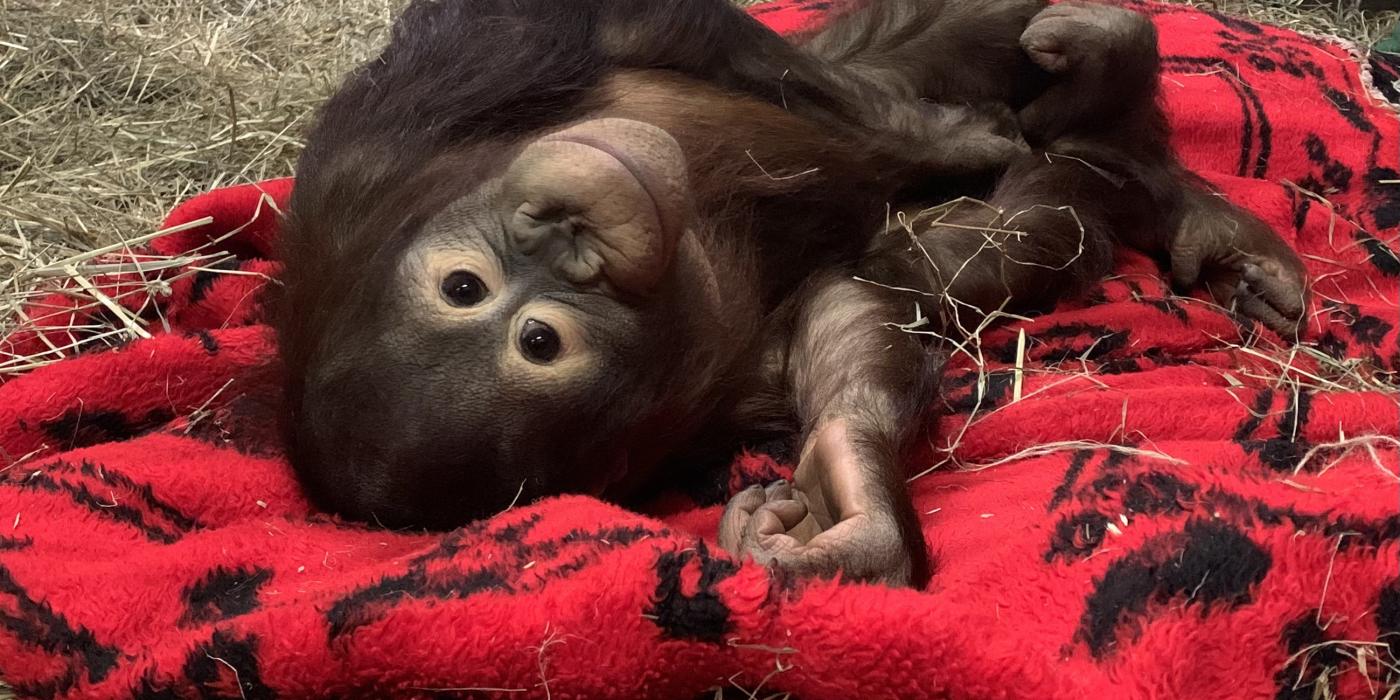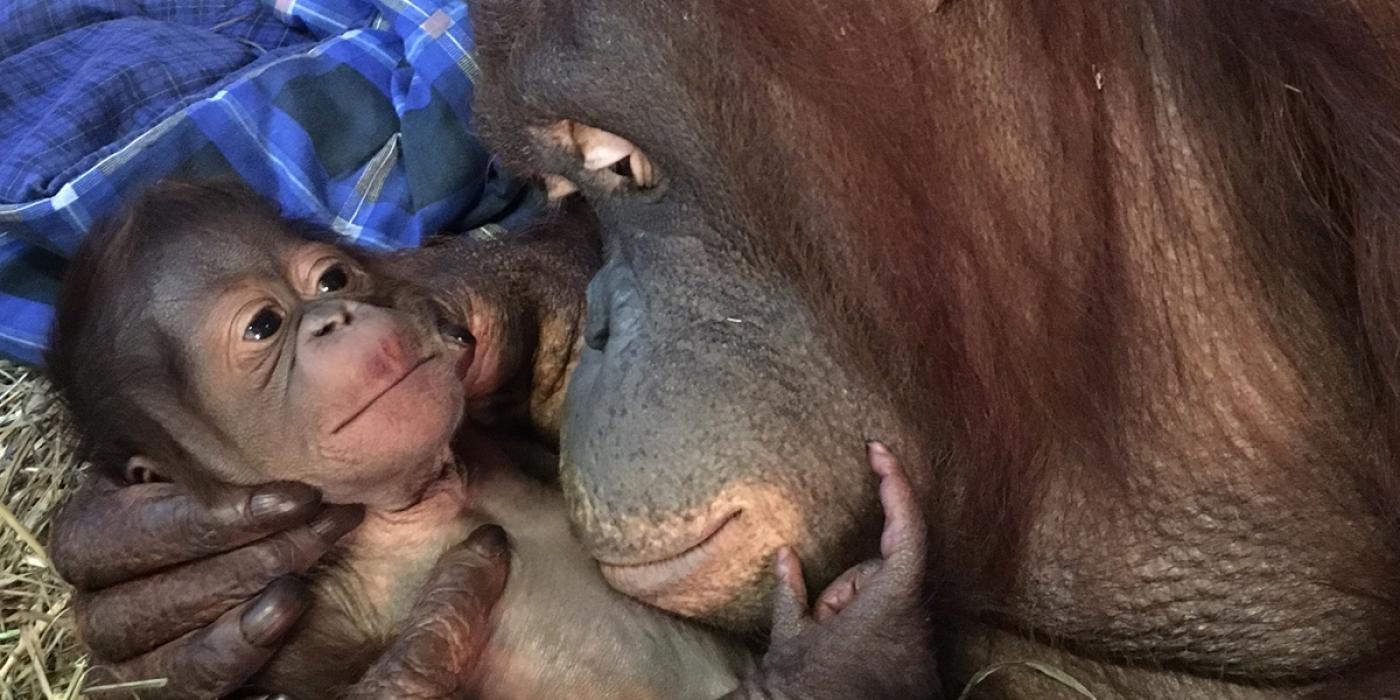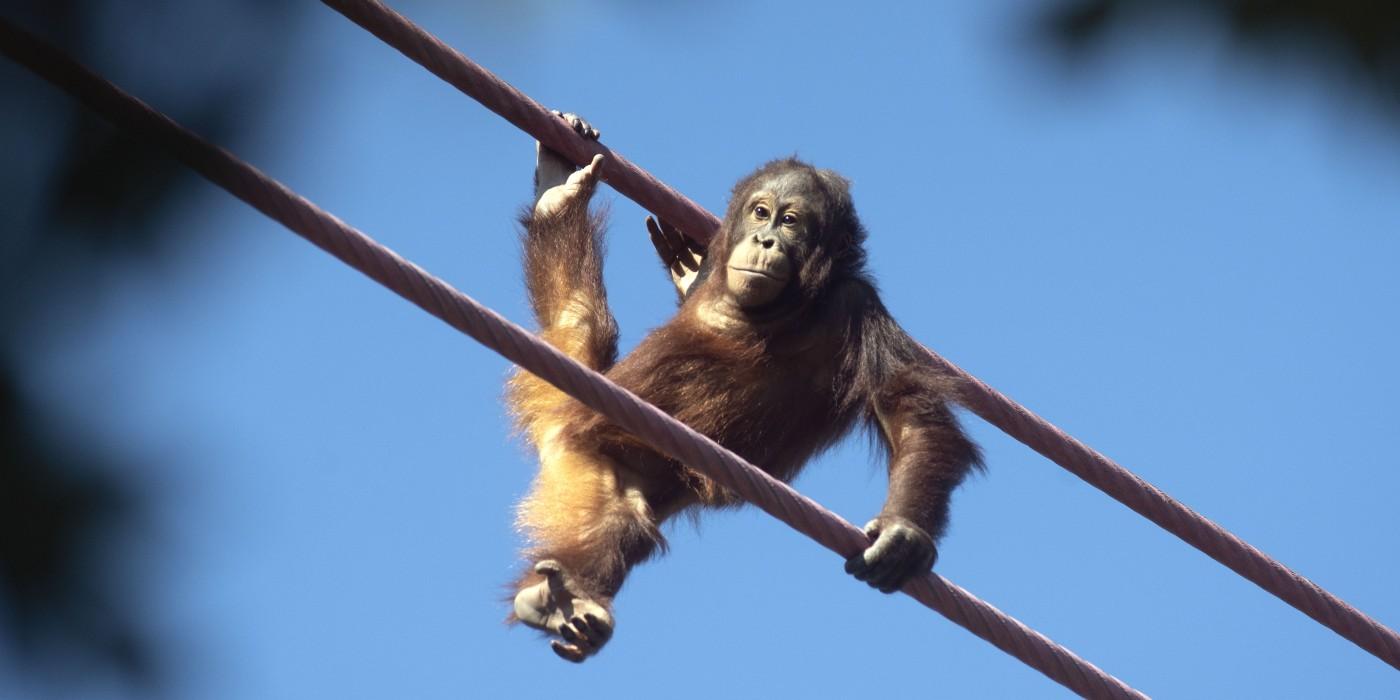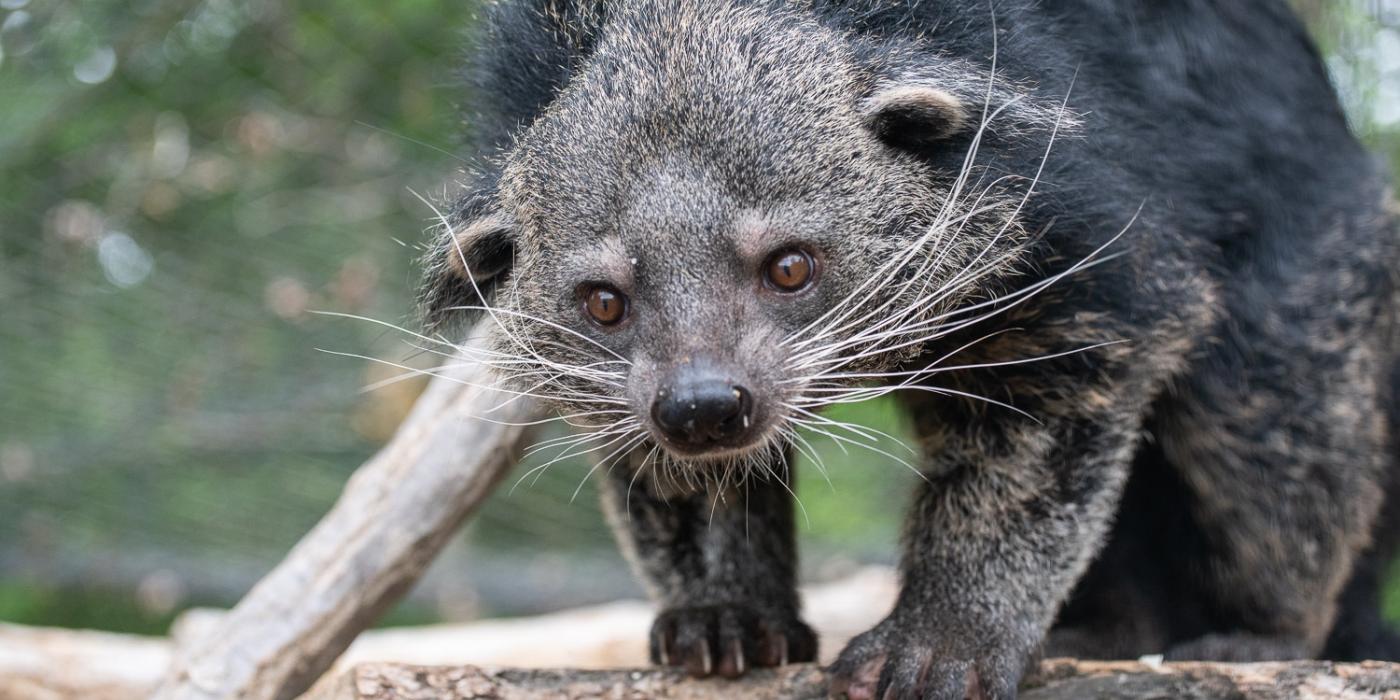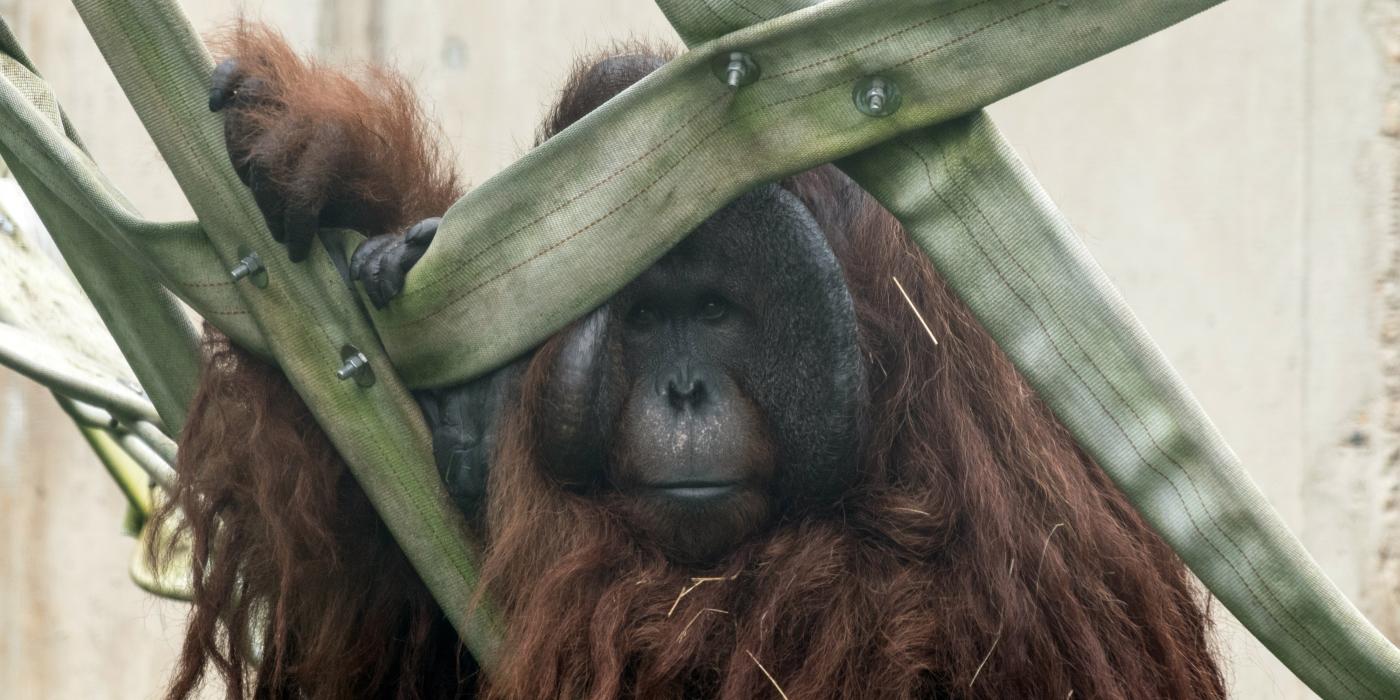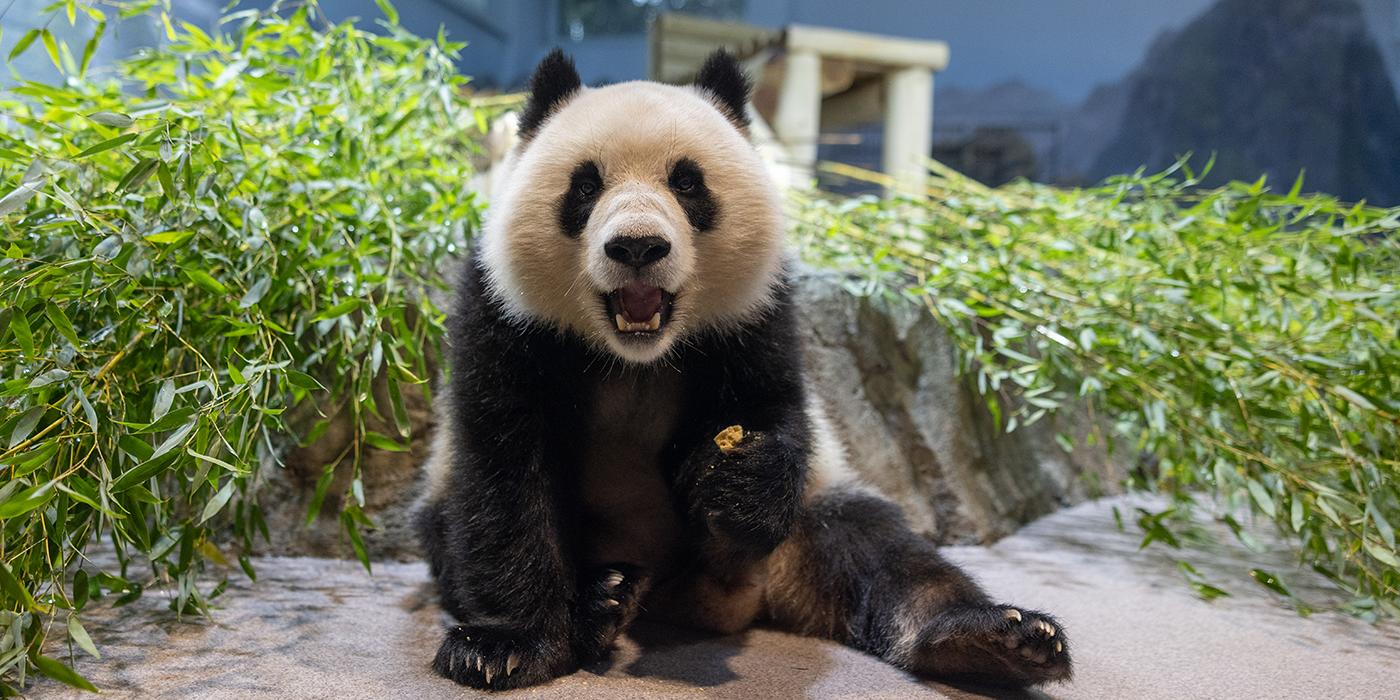#OrangutanStory: Happy 5th Birthday, Redd!
How is it possible that our youngest Bornean orangutan, Redd, is already celebrating his fifth birthday? It seems like yesterday Batang was carrying him on her shoulders across the O-Line because he was too young to climb the cables on his own.
Now, Redd is the master of the O-Line, eliciting gasps from staff and visitors alike as he hangs upside-down from his feet, tightrope walks across the cables or leaps from the cables onto the platform. Orangutans are skillful climbers; often, they are described as having four hands rather than what they actually have—two hands and two feet. Still, those of us who observe his O-Line travels (and are not quite as dexterous as orangutans) would breathe easier if he would hold on with more than one of his hands!
Related Species:

